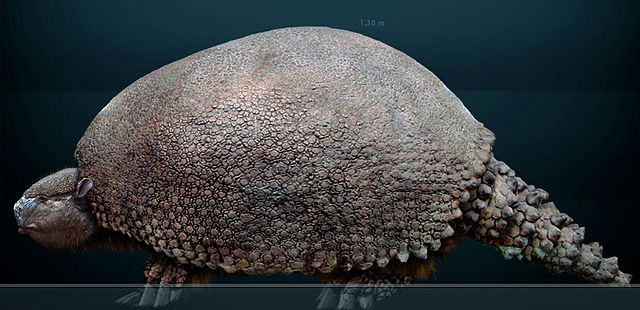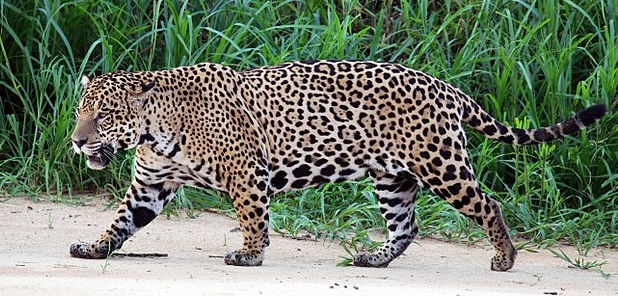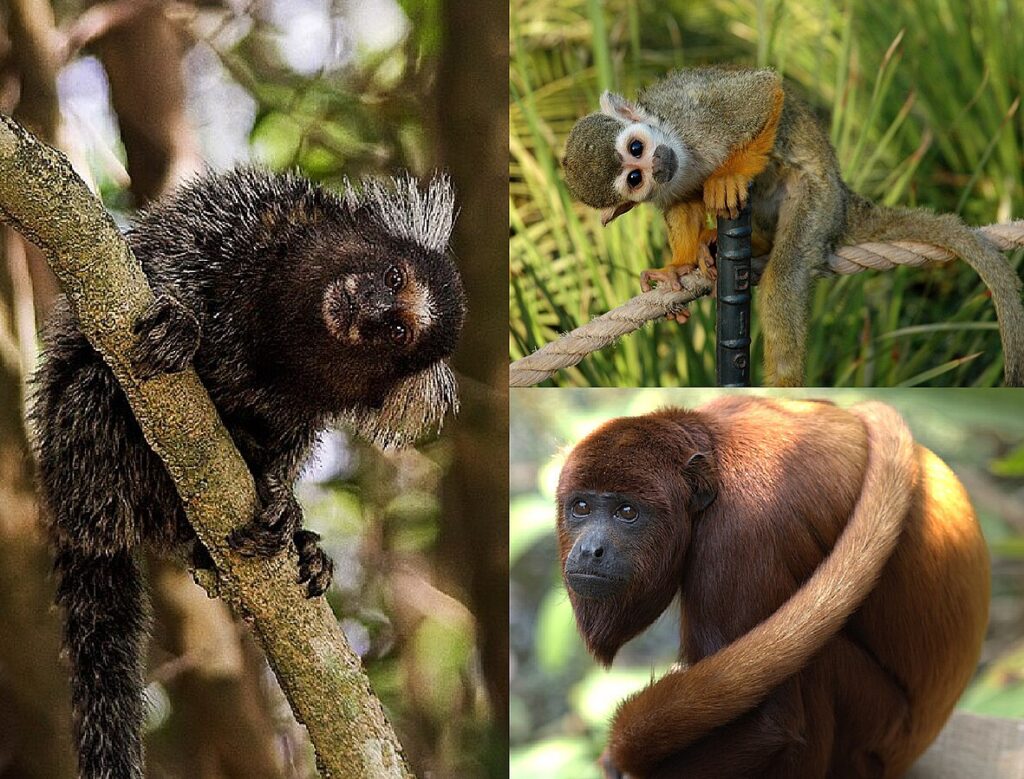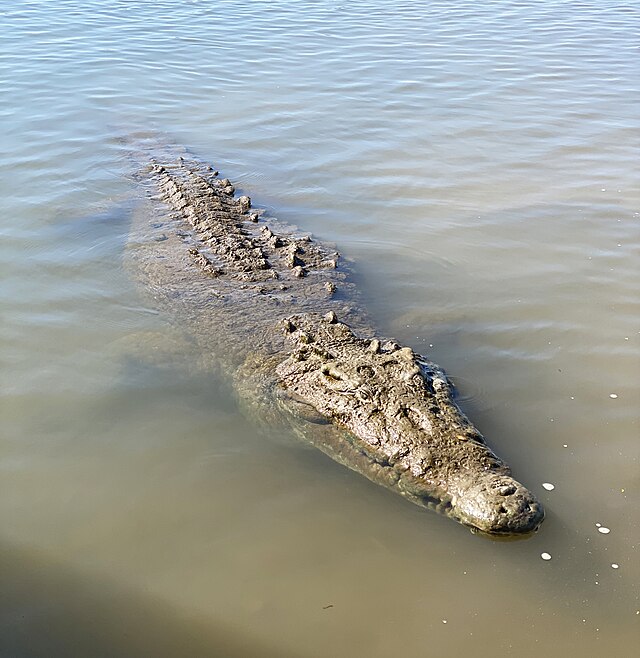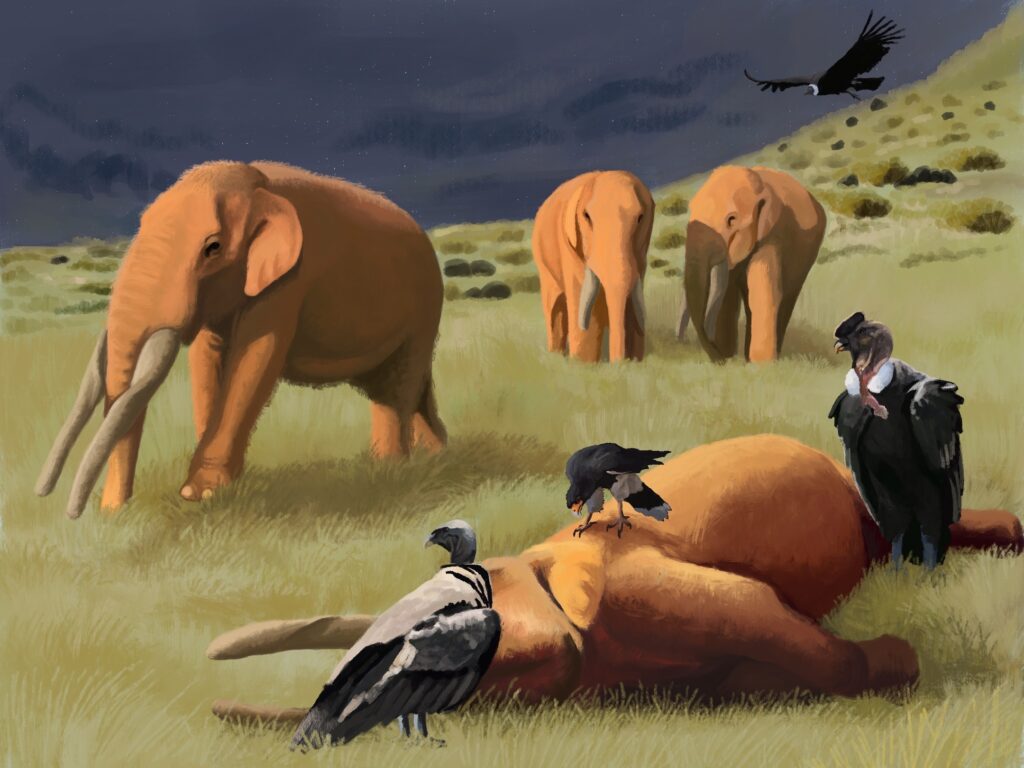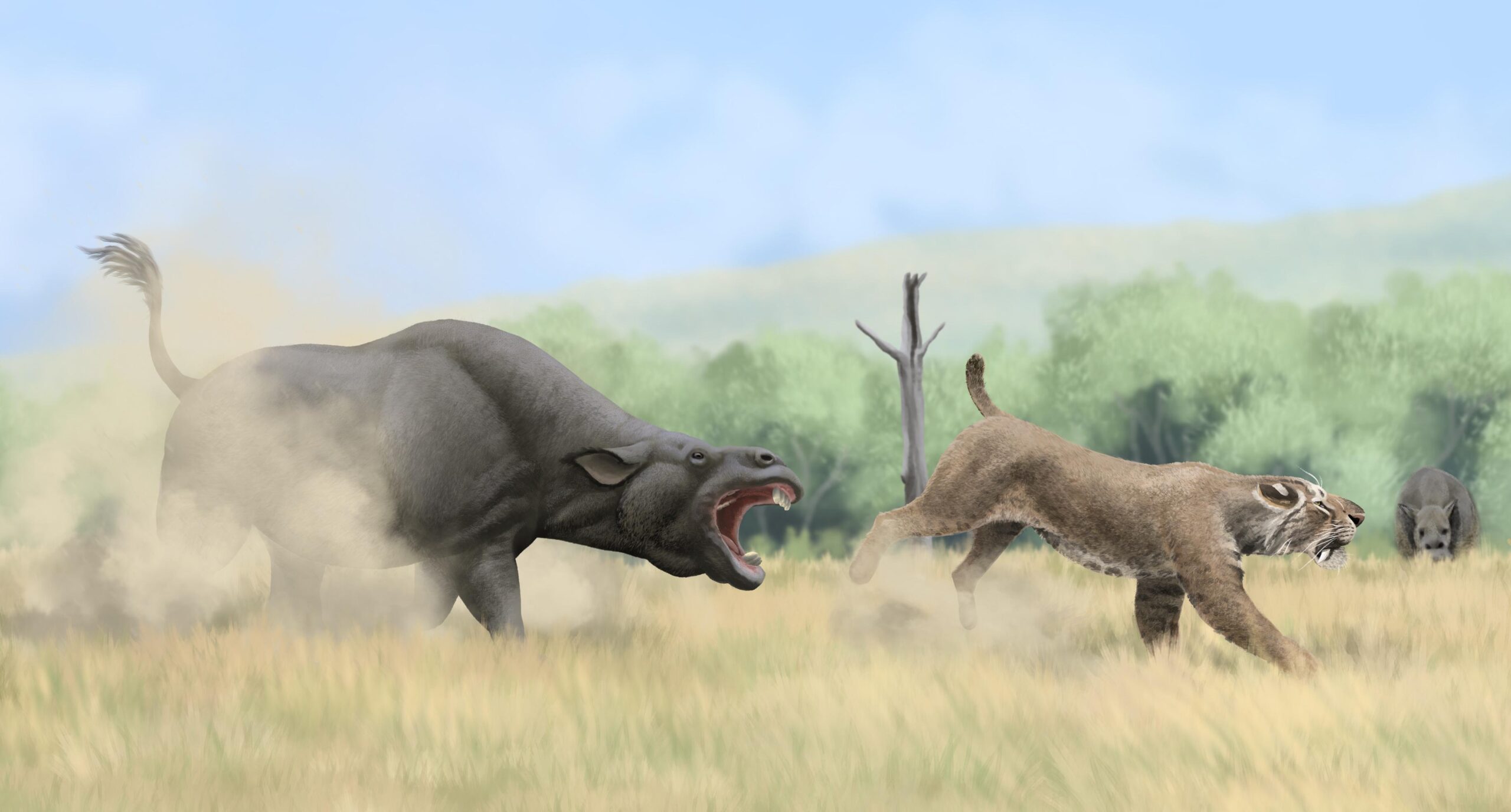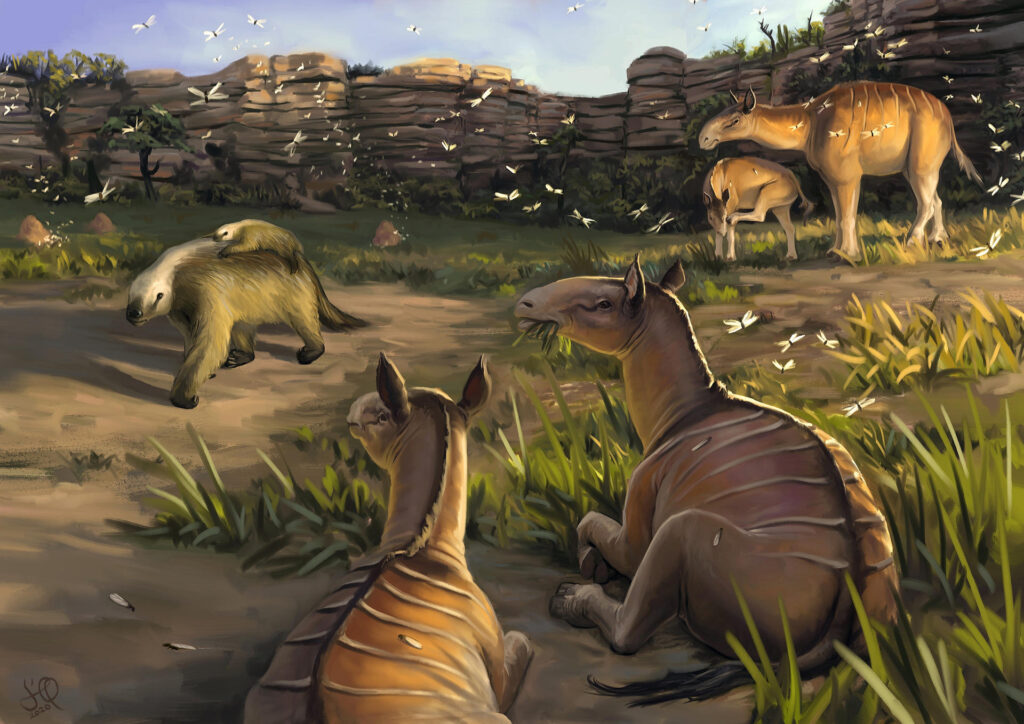Imagine that it’s 30,000 years ago in a tropical savannah. A spotted big cat is marking his territory next to a river lined with numerous palm trees on either side. What appears to be an elephant is bathing in the muddy water. A crocodile is laying on the river bank, basking in the warm sun. Several meters away, monkeys frolic in the treetops as an anteater prowls below, looking for insects. In the grassy fields beyond the riverine thickets, a herd of wild horses grazes while a one-ton relative of the armadillo is deep in slumber.
At first thought, someone reading this might assume this scene is in Africa. After all, that’s where you would go to spot monkeys, elephants, spotted big cats, wild equines(in the form of zebras), and crocodiles in their natural setting. But two animals give away the true location-the anteater and armadillo relative. Anteaters and the armadillo family are native to the Americas, not Africa. The setting is in fact in Venezuela.
The big cat is actually a jaguar, not a leopard or cheetah. The elephant-like animals are gomphotheres, distant relatives of the elephant that migrated to the Americas several million years ago while the horses are of the New World Hippidion genus. The armadillo relative is of the genus Glyptotherium, part of a large and once widespread clade of massive beasts with clubbed tails and thick armor. Gomphotheres, New World horses, and glyptodonts are no longer present in South America while monkeys, anteaters, jaguars, and crocodiles still are.
The most famous ecoregion in South America, and perhaps the world, is the Amazon rainforest. However, South America is also home to vast tracts of rich tropical and subtropical grasslands and savannahs such as the Cerrado, the Llanos, the Beni savannah, the Guianian savannah, and the Pampas. The Andes mountains in the west support a variety of habitats including alpine tundra at high elevations and cool, wet montane forests in the foothills of western Patagonia.
The proportion of South America that is desert is quite small compared to other continents, mainly centered on a thin strip along the Pacific coast known as the Atacama and a scrubby ecoregion on the Atlantic side called Caatinga. Other dry habitats include the Chaco forest in central South America and the vast Patagonian steppe which lies in the southeast. What these South American ecosystems have in common is that they have mostly been depopulated of their large and medium-sized animals; even the Amazon, world-renowned for its biological diversity, is sadly lacking in this regard.

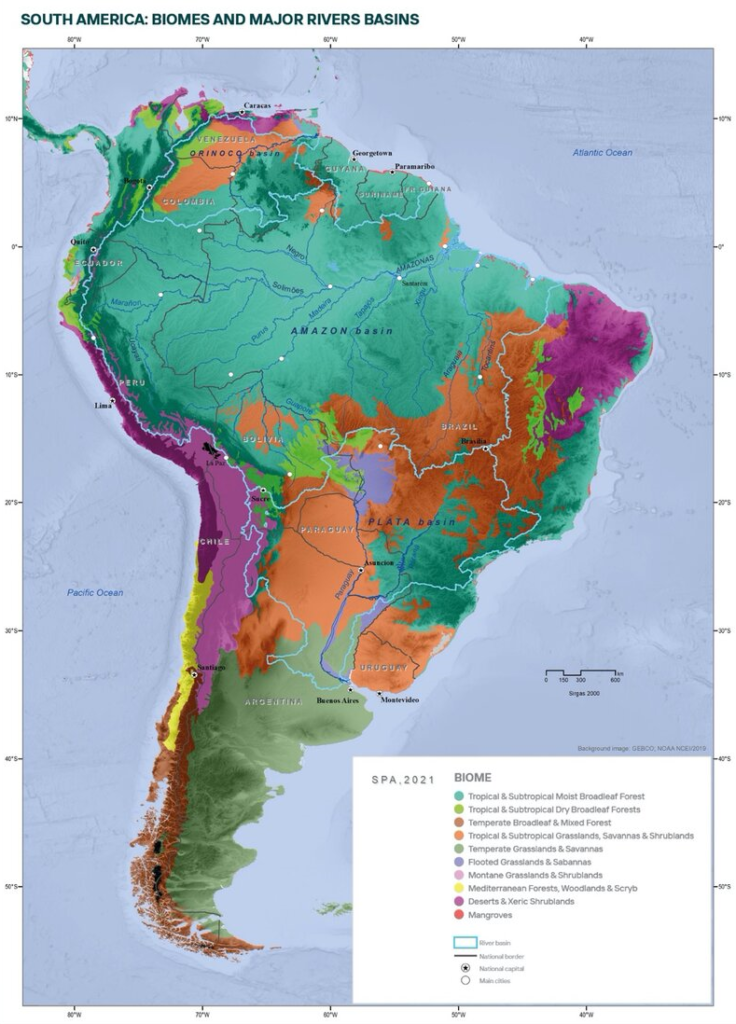

Going back to the Venezuelan setting at the beginning, one of the most remarkable things about the world prior to the Holocene is how much various continents at least superficially resembled modern Africa in terms of faunal characteristics. There were rhinos, horses, and elephantids all over Eurasia. Hippos were found in India and Southeast Asia. On the other hand, South America also clearly showed a fair degree of similarity to faunal assemblages in Africa, despite producing a number of unique lineages(more on this later). Similarity between Africa and Eurasia is to be expected given that they’re geographically adjacent to one another, but South America resembling Africa in this regard is rather surprising when you consider there’s a large ocean separating the two continents.
The fact that South America shared many faunal characteristics with continents oceans away speaks to the power of migration in shaping global biodiversity in intriguing ways. Proboscideans first emerged in Africa, but then spread out to dominate every continent except Antarctica and Australia. The two extant big cats in the Americas-pumas and jaguars-had ancestors that migrated from Asia. Horses emerged in North America and then spread to South America as well as Afro-Eurasia. On the other hand, New World monkeys descend from Old World monkeys that arrived from Africa floating on rafts of vegetation in the Atlantic during the Oligocene several million years ago when the distance was far smaller1. New World crocodiles took the same route but arrived later during the Pliocene and across much larger stretches of water2.
A critical piece in the migration story as it relates to South America is the Great American Biotic Interchange. South America was isolated for tens of millions of years during which time it developed a unique faunal assemblage, and only became connected to North America at the end of the Pliocene 3 million years ago when the Isthmus of Panama formed. This is when gomphotheres, tapirs, deer, canids, camelids of the llama family, peccaries(pig-relatives), cats, horses, and bears(yes, even bears) arrived in South America from North America. Meanwhile, there was a reverse migration of previously endemic South American fauna into North America, including the famous terror birds-giant, flightless predatory birds of the family Phorusrhacidae.

In general, migrants from South America to North America were far less successful than the reverse. In fact, many native South American fauna went extinct after the invasion of South America by North American species3. The reasons for this asymmetry are contentious. One possibility is that North American migrants were better adapted environmentally to South America than the other way around4. Other reasons for the imbalance could be greater competitive advantage of North American species or higher susceptibility to predation among South American species3. It should be noted that the timing and cause for the extinction of terror birds remains unclear5 6.
Despite losing much of its native fauna at the outset of the GABI, the animal guild of Pleistocene South America was awe-inspiring, especially its megafauna (animals weighing 40 kg or more). The megafaunal herbivore guild consisted of multiple species of deer, horse, ground sloth, macraucheniids, toxodontids, as well as glyptodonts and the related pampatheres. Two species of gomphothere are confirmed to have existed in South America during the Late Pleistocene, namely Cuvieronius hyodon and Notiomastodon platensis. The former was, interestingly, found in the Andean highlands while the latter was found in lowlands. Mammoths and mastodons did not make it to South America.
The predator guild was made up of jaguars, pumas, dire wolves, several crocodilian species, short-faced bears, and the sabre-toothed. S. populator, as well as most of the South American short-faced bears(Arctotherium genus), were separate species from their closest North American relatives as they had diverged from common ancestors. They included the massive A. angustidens and the smaller but more widespread A. wingei. Like modern bears, South American short-faced bears had varied diets, with some being less carnivorous than others.
The sheer number of massive animals present in South America exceeded that of other continents, as it had the largest number of megaherbivore species7. Even when comparing within types, the continent often stands on top. The two largest genera of ground sloth could both be found in South America—Eremotherium and Megatherium. The former occupied much of the tropical parts of the continent while the latter occupied much of the temperate regions. Smilodon populator and Arctotherium angustidens were most likely the largest cat and largest bear to ever exist, respectively. Of these four, only the last did not make it to the very end of the Pleistocene.

As for lesser known giants, there were the aforementioned macraucheniids and toxodontids, representatives of the large herbivore guild prior to the GABI. Macraucheniids were bizarre creatures, usually depicted in reconstructions resembling llamas but with oddly-shaped snouts. The toxodontids belonged to the order known as notoungulates, and included the more northerly Mixotoxodon and the more southerly Toxodon. Toxodon was the better known of the two. It resembled a strange mixture between a rhinoceros and a hippo and Darwin himself was perplexed by it. Toxodon and macraucheniids both weighed over a ton and were common prey items of Smilodon populator.
Like animals everywhere else, South American megafauna had to endure the effects of repeated climate oscillations during the Pleistocene. Scientists debate how much colder temperatures were in the tropics and subtropics during the Last Glacial Maximum, but it is likely that South America’s geographic location mitigated the intensity of Quaternary climate change in general8 9. During cold periods, a large ice sheet known as the Patagonian ice sheet covered the southern Andes while the southeastern continental shelf was heavily exposed. It is believed that during the LGM, the Amazon rainforest cover may have shrank somewhat, although the extent to which it contracted is strongly debated10.
Nonetheless, the Amazon rainforest persisted throughout the entire Pleistocene and retained its enormous diversity of lifeforms. The region’s hot and humid climate combined with acidic soils means that fossils of animals do not preserve well, while remoteness makes it hard to find them. However, certain species of extinct megafauna most likely did occur in the rainforest11. In fact, there is speculation that gomphotheres might have enabled nutrient transport from the nutrient rich western Amazon to the nutrient-poor eastern Amazon12. The modern Amazon has a reputation in popular imagination as being an untamed, dark, and mysterious place filled with monsters despite its relative paucity of large animals. The rainforest of the Pleistocene with its now-extinct megafauna would have been even more captivating-the Neotropical mirror image of the Congo.
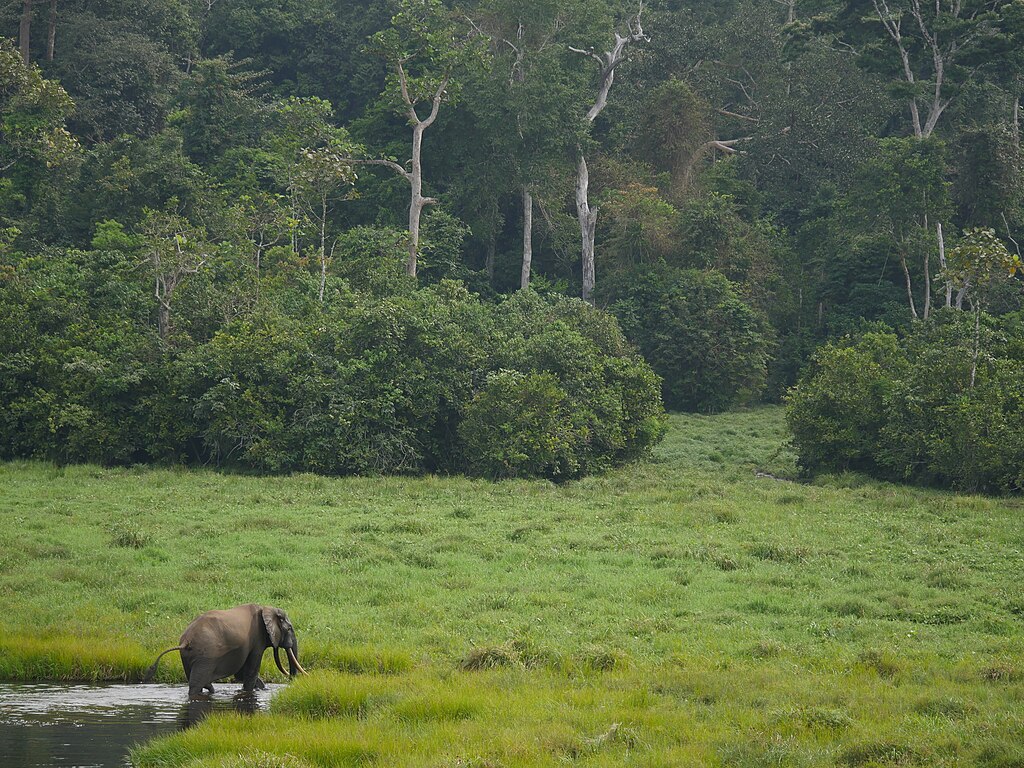
While South America still retains exceptional biodiversity due to its rainforests, no giants remain and the megafaunal assemblage is greatly diminished overall. Tapirs, deer, a number of large crocodilian species, jaguar, and pumas are still extant as is the spectacled bear, the last remaining short-faced bear. Guanacos and vicuñas are wild ancestors of the llama and alpaca respectively. Meanwhile, giant ground sloths left behind relatives too small to count as megafauna, such as tree sloths.
Compared to what we are able to experience when seeing the continent today, the first humans to have entered it were certainly blessed to have witnessed it in all its glory. South America back then was truly a land of giants, even by Pleistocene standards, shaped by migration events that brought its once isolated and highly distinctive faunal assemblage closer to that of other realms to form an incredible medley of creatures in some of the richest habitats on the planet.
References
1. Godinot, M. (2020). Rafting on a wide and wild ocean. Science, 368(6487), 136–137. https://doi.org/10.1126/science.abb4107
2. Meredith, R. W., Hekkala, E. R., Amato, G., & Gatesy, J. (2011). A phylogenetic hypothesis for Crocodylus (Crocodylia) based on mitochondrial DNA: Evidence for a trans-Atlantic voyage from Africa to the New World. Molecular Phylogenetics and Evolution, 60(1), 183–191. https://doi.org/10.1016/j.ympev.2011.03.026
3. Faurby, S., & Svenning, J.-C. (2016). The asymmetry in the Great American Biotic Interchange in mammals is consistent with differential susceptibility to mammalian predation. Global Ecology and Biogeography, 25(12), 1443–1453. https://doi.org/10.1111/geb.12504
4. Webb, S. D. (1991). Ecogeography and the Great American Interchange. Paleobiology, 17(3), 266–280. https://doi.org/10.1017/s0094837300010605
5. Marshall, L. G. (1994). The Terror Birds of South America. Scientific American, 270(2), 90–95. http://www.jstor.org/stable/24942595
6. Jones, W., Rinderknecht, A., Alvarenga, H., Montenegro, F., & Ubilla, M. (2017). The last terror birds (Aves, Phorusrhacidae): new evidence from the late Pleistocene of Uruguay. PalZ, 92(2), 365–372. https://doi.org/10.1007/s12542-017-0388-y
7. Owen-Smith, N. (2013). Contrasts in the large herbivore faunas of the southern continents in the late Pleistocene and the ecological implications for human origins. Journal of Biogeography, 40(7), 1215–1224. https://doi.org/10.1111/jbi.12100
8. Annan, J. D., Hargreaves, J. C., & Mauritsen, T. (2022). A new global surface temperature reconstruction for the Last Glacial Maximum. Climate of the Past, 18(8), 1883–1896. https://doi.org/10.5194/cp-18-1883-2022
9. Herrando-Moraira, S., Nualart, N., Galbany-Casals, M., Garcia-Jacas, N., Ohashi, H., Matsui, T., Susanna, A., Tang, C. Q., & López-Pujol, J. (2022). Climate Stability Index maps, a global high resolution cartography of climate stability from Pliocene to 2100. Scientific Data, 9(1), 48. https://doi.org/10.1038/s41597-022-01144-5
10. Mayle, F. E., Beerling, D. J., Gosling, W. D., & Bush, M. B. (2004). Responses of Amazonian ecosystems to climatic and atmospheric carbon dioxide changes since the last glacial maximum. Philosophical Transactions of the Royal Society of London. Series B: Biological Sciences, 359(1443), 499–514. https://doi.org/10.1098/rstb.2003.1434
11. Asevedo, L., Ranzi, A., Kalliola, R., Pärssinen, M., Ruokolainen, K., Cozzuol, M. A., Nascimento, E. R. do, Negri, F. R., Souza-Filho, J. P., Cherkinsky, A., & Trindade Dantas, M. A. (2020). Isotopic paleoecology (δ13C, δ18O) of late Quaternary herbivorous mammal assemblages from southwestern Amazon. Quaternary Science Reviews, 251, 106700. https://doi.org/10.1016/j.quascirev.2020.106700
12. Doughty, C. E., Wolf, A., & Malhi, Y. (2013). The legacy of the Pleistocene megafauna extinctions on nutrient availability in Amazonia. Nature Geoscience, 6(9), 761–764. https://doi.org/10.1038/ngeo1895
